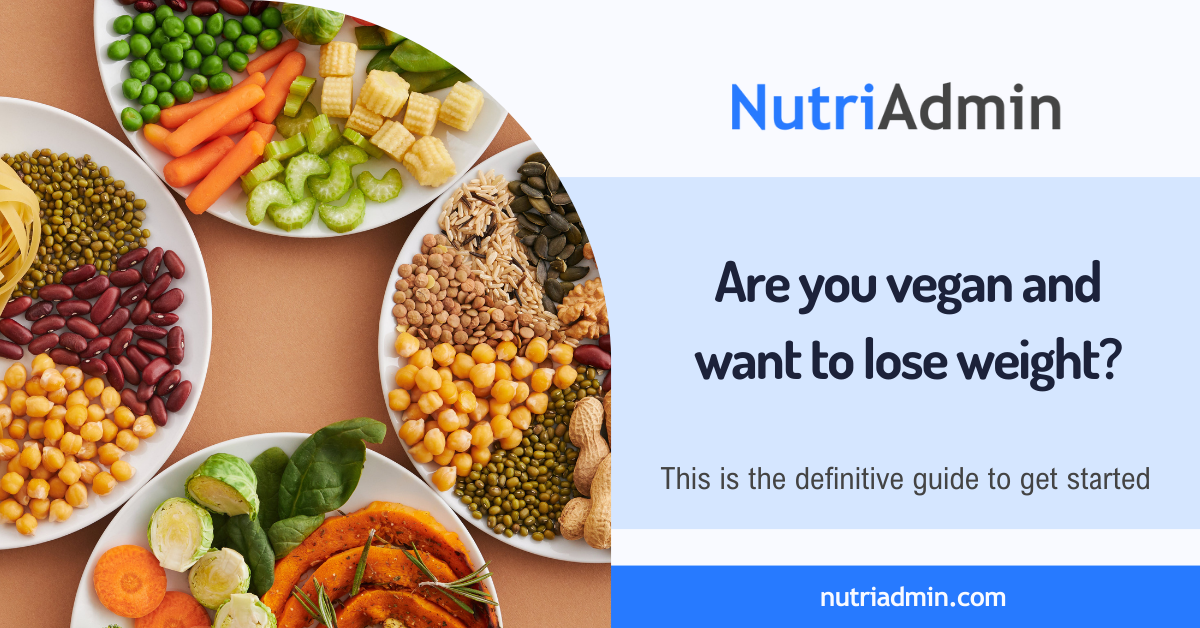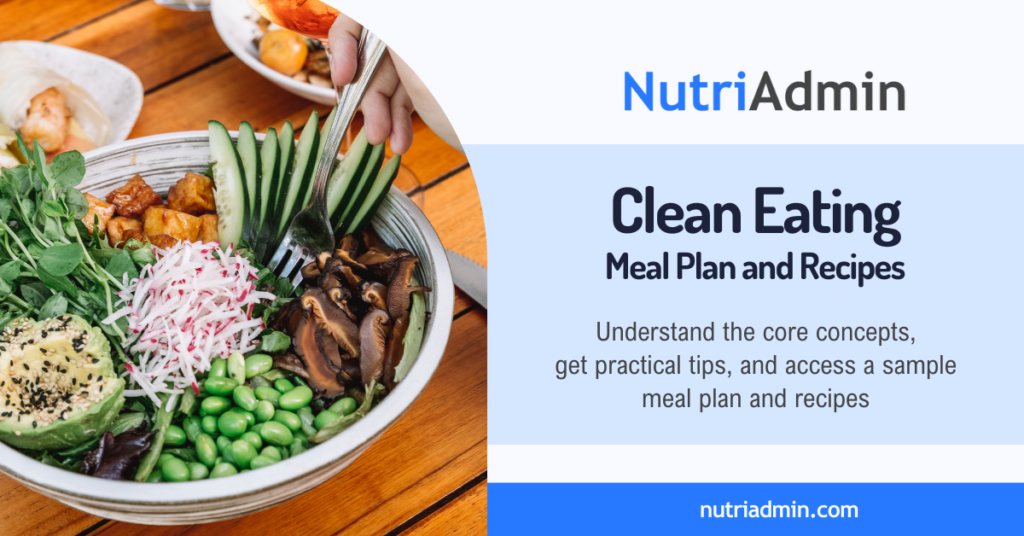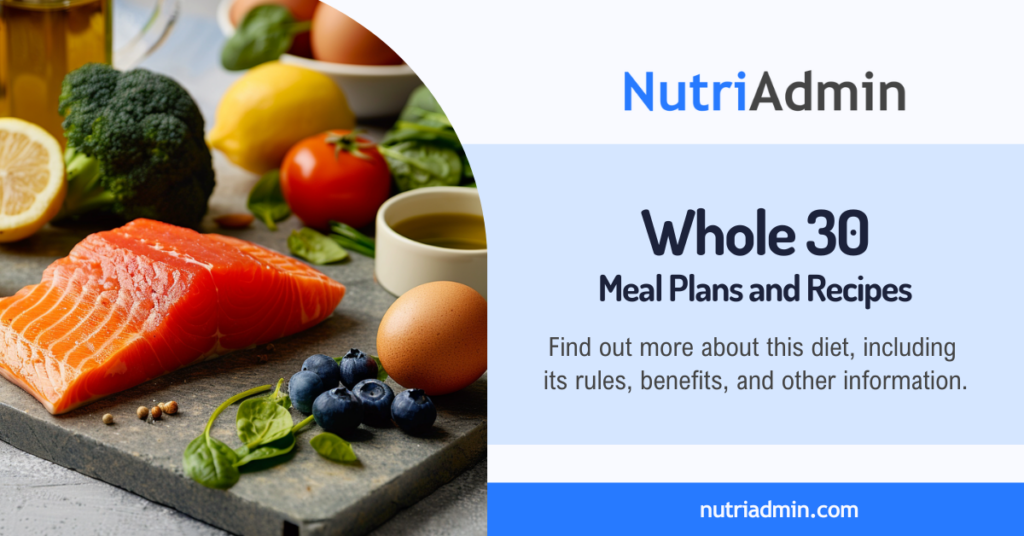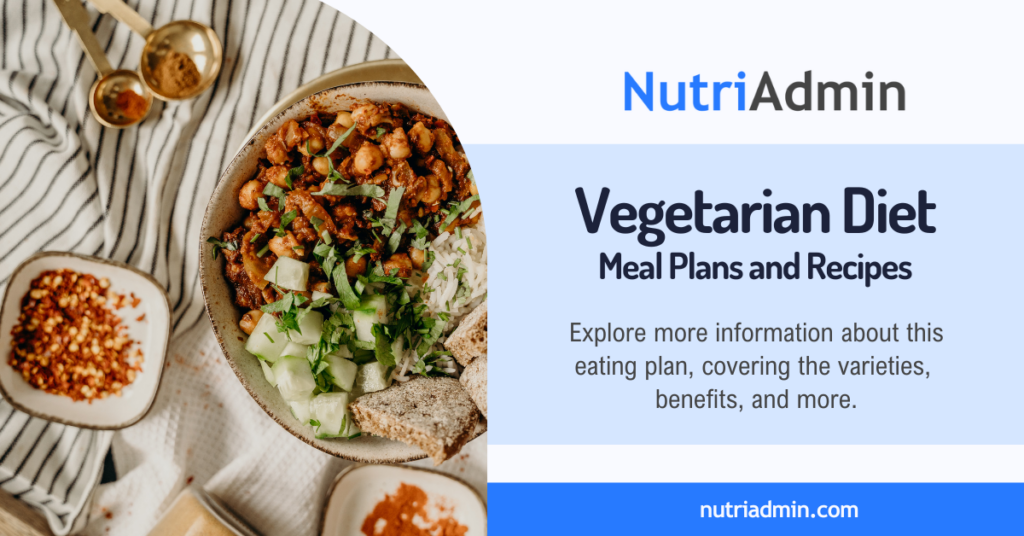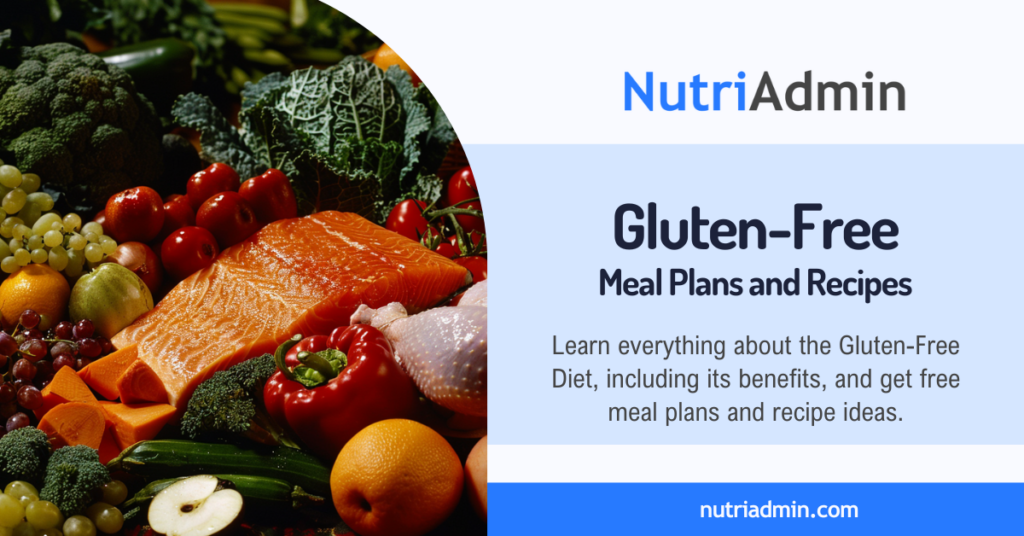Whether you are already a vegan trying to lose weight or simply want to explore shedding some pounds through a vegan diet, this article has got you covered. We’ll break down the basics of the vegan diet, explain how it helps you lose weight, discuss common pitfalls to avoid, offer practical weight loss tips, and even provide a free 7-day vegan meal plan with easy recipes.
- The Science Behind Vegan Diet and Weight Loss
- Common Mistakes to Watch For While Trying to Lose Weight on a Vegan Diet
- What should my meals include to lose weight on a vegan diet?
- Tips on How to Lose Weight on a Vegan Diet
- Muscle Gain and Vegan Diet
- Benefits of Vegan Diet Beyond Weight Loss
- Automatic Vegan Meal Planning Software
- Conclusion
- FAQs
The Science Behind Vegan Diet and Weight Loss
In order to achieve your goal to lose weight through a vegan diet, understanding the science behind its different aspects like nutrition, metabolism, and food choices is important. In this section, we’ll uncover the science behind why a vegan diet works well for managing weight and how its nutritional aspects are crucial in this process.
How does Vegan Diet Aid in Weight Loss?
Low Caloric Density
One of the key reasons a vegan diet is effective for weight loss is its low caloric density. This means it provides fewer calories for the same volume of food.
Vegan meals are typically rich in fiber, vitamins, and minerals while being relatively low in calories. This combination allows you to consume satisfying, filling meals with fewer calories, while preventing overeating and promoting weight loss.
High Fiber Content
Plant-based foods are known for their high fiber content, which is essential for weight management. Fiber adds bulk to your diet, increasing the feeling of fullness and reducing the overall calorie intake. Moreover, it helps stabilize blood sugar levels and prevents sudden spikes in hunger.
Research about Weight Loss and Vegan Diet
Over the past few years, numerous scientific studies have shed light on the relationship between a vegan diet and weight loss. These studies have provided valuable insights into the effectiveness of veganism as a weight management strategy.
A comprehensive umbrella review of systematic reviews and meta-analyses demonstrated that for the general healthy population, adopting a vegan diet can lead to effective weight reduction, offering a potential path to a healthier weight.
It shows notable reduction in body weight, with an average loss of approximately 2.52 kilograms (about 5.56 pounds). This finding underscores the potential of a vegan diet as a sustainable and health-conscious strategy for shedding excess weight.
Nutritional Aspects of a Vegan Diet for Effective Weight Management
Vegan diet naturally has a lot of advantages when it comes to nutrition and weight management since most of the foods included are full of vitamins, minerals and fiber. It also contains low saturated fats that are commonly found on animal products which are linked to cardiovascular diseases.
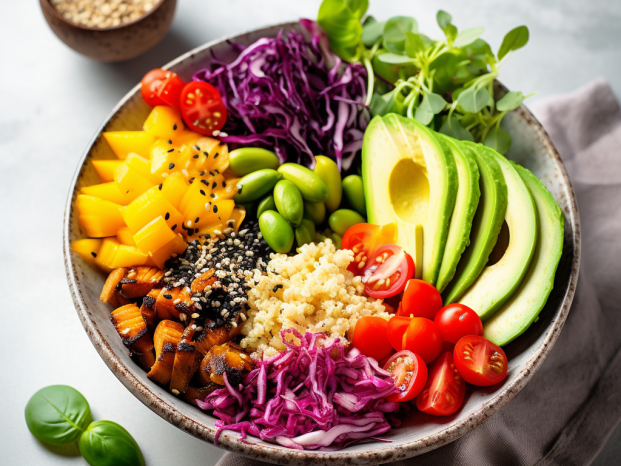
Balanced Macronutrients
A well-structured vegan diet can provide all the necessary macronutrients—carbohydrates, proteins, and fats. To promote weight loss, it’s essential to ensure a balanced intake of these macronutrients. Whole grains, legumes, nuts, and seeds are excellent sources of protein and healthy fats, while fruits and vegetables supply complex carbohydrates.
Micronutrient-Rich Foods
Vegan diets are often rich in essential vitamins and minerals, including vitamins A, C, and K, as well as potassium, magnesium, and folate. These nutrients support various bodily functions, including metabolism and energy production.
Plant-Based Protein
Protein is a crucial component of a weight loss diet as it helps preserve lean muscle mass while promoting fat loss.
Plant-based protein sources like tofu, tempeh, lentils, and beans offer a great alternative to animal products.
Common Mistakes to Watch For While Trying to Lose Weight on a Vegan Diet
With all the information on the internet, it would be hard to tell which to follow especially when you are just starting out on a vegan diet. We’ve compiled a list of usual mistakes as well as tips on how to avoid them.
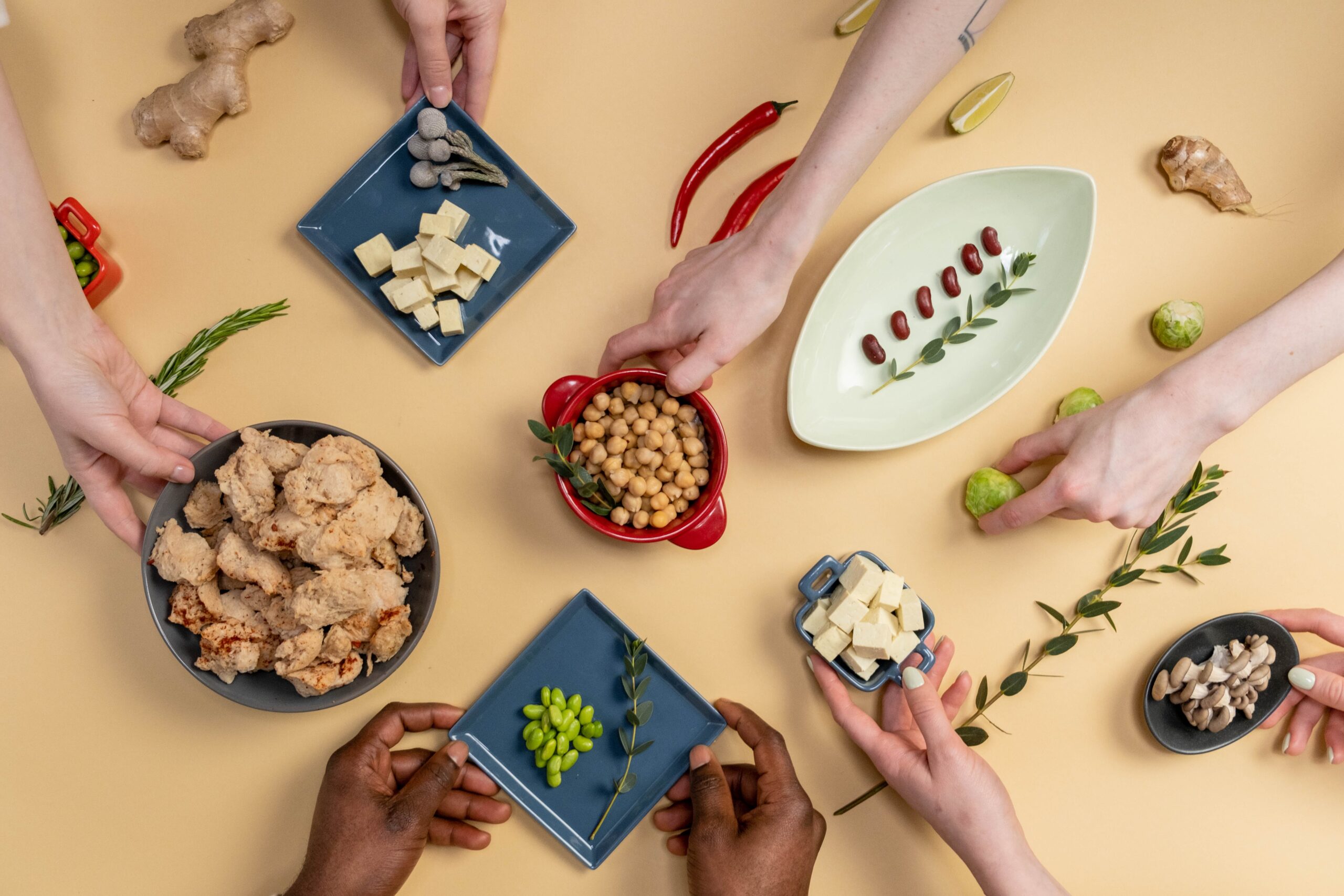
Inadequate Protein Intake
Research shows that vegans generally consume less total protein than other dietary groups, potentially leading to concerns about insufficient protein intake, especially when legume, seed, and nut consumption is limited. Additionally, vegans tend to intake fewer essential amino acids compared to non-vegans. It’s worth noting that plant proteins are typically less digestible (about 50-70%) than animal proteins, and certain food processing methods, such as heating, can further reduce their digestibility.
Complementary Proteins
Complementary proteins are an essential concept that ensures vegans receive all the necessary amino acids to meet their protein requirements. Knowing this is important especially when you are trying to lose weight on a vegan diet while ensuring that you will not affect your health negatively.
Essential Amino Acids
Proteins are composed of amino acids, some of which are considered essential because the body cannot synthesize them on its own. These essential amino acids (EAAs) must be obtained from the diet. While animal-based protein sources usually contain all essential amino acids, some plant-based sources may be deficient in one or more of them. The following are the EAAs:
- histidine
- isoleucine
- leucine
- lysine
- methionine
- phenylalanine
- threonine
- tryptophan
- valine
Complementary proteins are plant-based foods that, when combined, provide a complete set of essential amino acids. By strategically pairing different foods, vegans can ensure they receive a well-balanced intake of amino acids.
Complementary protein pairings
Here are some examples of complementary protein pairings to help you plan your vegan meals:
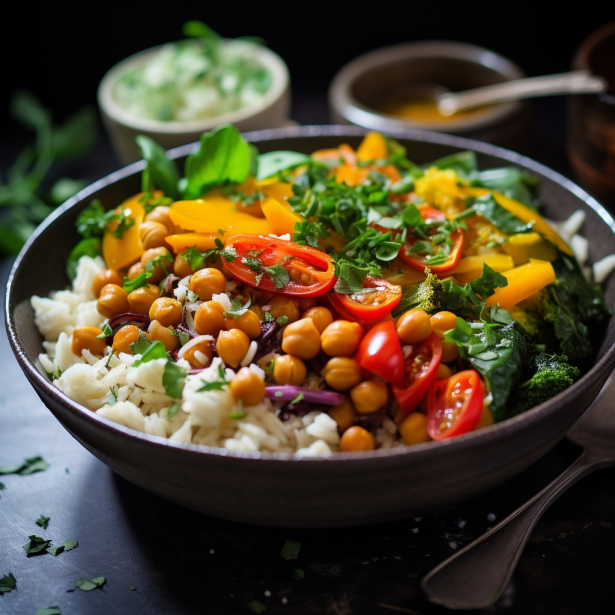
Legumes and Grains
Combining legumes (such as beans, lentils, or chickpeas) with grains (like rice, wheat, or oats) forms a complete protein profile. Legumes are typically rich in lysine but low in methionine, while grains are the opposite.
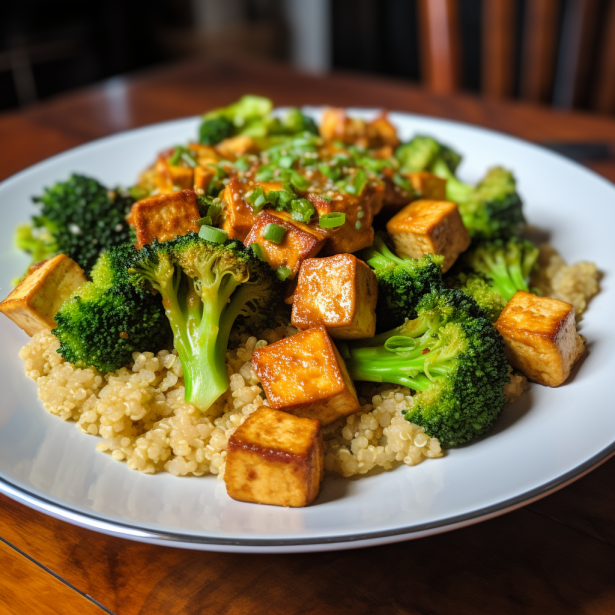
Tofu and Whole Grains
Tofu, a soy-based protein, is a complete protein source. When consumed with whole grains, it offers a well-rounded amino acid profile.
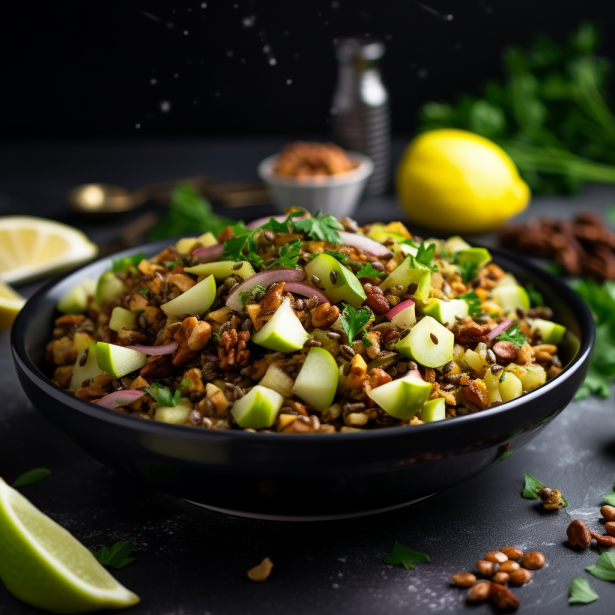
Legumes and Nuts/Seeds
The legumes, when paired with nuts or seeds (like almonds, sunflower seeds, or peanuts), create a complementary protein blend. They are abundant in lysine, whereas nuts and seeds are higher in methionine.
Relying on Processed Vegan Foods
While it’s true that veganism encourages the avoidance of animal products, not all vegan foods are created equal when it comes to health. Some vegan options can be highly processed and loaded with empty calories. Some food companies use labels like “vegan” to lure in customers because it can be perceived as healthy or “guilt-free”, but that’s just a trick they use to make sales.
Processed vegan foods like vegan burgers, vegan cheeses, and packaged snacks can contain high levels of salt, sugar, unhealthy fats, and preservatives. Other processed foods even if they are vegan can also contain a lot of calories like crisps and pastries. Overindulging in these processed options can undermine your weight loss efforts.
Several studies showed that excessive consumption of ultra-processed vegan foods can lead to weight gain and other negative health outcomes. These processed options often lack essential nutrients and are associated with higher calorie intake, potentially leading to obesity and related health issues.
Missing Out on Essential Nutrients
When not carefully planned, a vegan diet may lack sufficient amounts of several micronutrients and minerals that are either not abundant in plants or have limited bioavailability.
Vitamin B12 Deficiency
Studies indicate that individuals following a vegan diet face a greater risk of vitamin B12 deficiency compared to those who include animal products in their diet. This deficiency is linked to an increased risk of various health issues, including neurological, vascular, immune, and inflammatory disorders. Therefore, it’s essential to plan vegan meals carefully, ensuring they include Vitamin B12-fortified foods or taking Vitamin B12 supplements as recommended by healthcare professionals.
This complex compound is primarily found in animal products as it is originally produced by bacteria. In contrast, plants do not naturally produce vitamin B12. While some seaweeds, like nori, and microalgal products may contain this nutrient, it is due to their association with B12-producing microbes. As a result, the availability of vitamin B12 in these sources can vary, making them unreliable for intake. Therefore, the only dependable sources of vitamin B12 are animal-derived foods and plant-based foods that have been adequately fortified.
Iron Deficiency
Plant-based sources of iron are non-heme iron, which is not as readily absorbed as heme iron from animal products. Iron deficiency can lead to anemia, weakness, and decreased exercise performance.
To enhance iron absorption, consume iron-rich foods like lentils, beans, tofu, and fortified cereals along with vitamin C-rich foods such as citrus fruits, bell peppers, and broccoli. Vitamin C enhances the absorption of non-heme iron. Additionally, cooking in cast iron pans can increase iron content in your food. Monitoring your iron levels with regular blood tests and consulting a healthcare professional can help you maintain optimal iron status.
Calcium Deficiency
A recent study has drawn a connection between calcium deficiency and a vegan diet. It highlights that people following a vegan diet may be at risk of not getting enough calcium, which is essential for strong bones and overall health.
The good news is that there are practical solutions to address this concern. Vegan-friendly sources of calcium include fortified plant-based milk, tofu made with calcium sulfate, almonds, and leafy greens like kale. Incorporating these foods into your diet can help ensure you’re meeting your calcium needs. Additionally, calcium supplements can be considered after consulting with a healthcare professional to maintain optimal calcium levels while enjoying the benefits of a vegan lifestyle.
What should my meals include to lose weight on a vegan diet?
To lose weight on a vegan diet, it’s essential to focus on a balanced and nutrient-rich approach. Your meals should include a variety of foods to ensure you’re meeting your nutritional needs while maintaining a calorie deficit. Here’s a general guideline for creating well-rounded vegan meals for weight loss:
Plant-Based Protein: Incorporate a source of plant-based protein in each meal to help with satiety and muscle maintenance. Good options include:
- Legumes (e.g., lentils, chickpeas, black beans)
- Tofu or tempeh
- Seitan (wheat gluten)
- Edamame
- Quinoa
Whole Grains: Choose whole grains for their fiber content and sustained energy release. Examples include:
- Brown rice
- Quinoa
- Whole wheat pasta
- Oats
- Barley
Vegetables (Starchy and Non-Starchy): Include a mix of starchy and non-starchy vegetables in your meals to ensure a well-balanced nutrient intake. Include a colorful array of veggies to benefit from different vitamins, minerals, and antioxidants. This includes:
- Starchy vegetables: Sweet potatoes, potatoes, butternut squash, and corn.
- Non-starchy vegetables: Leafy greens, broccoli, cauliflower, zucchini, and bell peppers.
Fruits: Fruits provide essential vitamins, minerals, and natural sugars for a touch of sweetness in your meals. Some excellent options include:
- Berries, such as blueberries, strawberries, and raspberries.
- Citrus fruits like oranges, grapefruits, and mandarins.
- Apples, pears, and bananas.
- Tropical fruits like mangoes, papayas, and pineapples.
Healthy Fats: Incorporate sources of healthy fats into your diet to support overall health and satiety. These can include:
- Avocado: A great source of monounsaturated fats and fiber.
- Nuts and seeds: Walnuts, almonds, flaxseeds, and chia seeds.
- Olive oil for cooking and salad dressings.
- Coconut oil in moderation for its unique flavor and medium-chain triglycerides
Tips on How to Lose Weight on a Vegan Diet
Losing weight on a vegan diet is not only achievable but can also be a sustainable and health-conscious approach to shedding those extra pounds. In a world where diets and weight loss strategies abound, adopting a vegan lifestyle offers a unique and ethical path towards reaching your fitness goals. This journey is not just about what you exclude from your diet but rather the exciting and nourishing world of plant-based foods you embrace.
To successfully lose weight on a vegan diet, you need careful planning and consideration. Here are several tips to make your vegan weight loss journey easier.
Set realistic goals
In every effort to lose weight including on a vegan diet, it is important to set achievable and realistic goals. Remember, sustainable weight loss is a gradual process and not a quick fix.
Why does it matter?
- Achievability: Realistic goals are attainable within your current circumstances. They account for your resources, capabilities, and constraints, ensuring that you can realistically work toward them.
- Motivation: When you set goals that are within reach, you’re more likely to stay motivated and committed. Achieving smaller, realistic milestones along the way boosts your confidence and fuels your drive to tackle bigger challenges. Building the motivation to lose weight is a crucial factor in achieving progress.
- Accountability: Realistic goals provide a clear standard for measuring your progress. They help you hold yourself accountable and track your development over time.
How to Set Realistic Goals
- Be Specific: Define your goals with precision. Vague objectives make it challenging to measure progress. Instead of saying “lose weight,” specify how much weight you want to lose and in what timeframe.
- Consider Your Resources: Take stock of the resources available to you. This includes your time, financial means, knowledge, and support system. Set goals that align with these resources.
- Break It Down: Divide larger goals into smaller, manageable steps or milestones. This makes the journey less overwhelming and more achievable. For example, if your goal is to run a marathon, start with a 5k race.
- Set a Timeline: Establish a realistic timeframe for each goal or milestone. Having a deadline creates a sense of urgency and prevents procrastination.
- Flexibility: Life is unpredictable, so allow for some flexibility in your goals. Unexpected setbacks happen, and being adaptable helps you stay on course.
Calorie Deficit
Eating less than what your body is using or burning is one of the common ways to lose weight. However, it is important not to overdo it. Usual recommendation for calorie deficit is 500 kcal less than your daily caloric requirement. This will help you lose approximately one pound per week.
For example, if your daily calorie requirement is 2,000 kcal:
2,000 kcal – 500 kcal = 1,500 kcal
This means, in order to lose about 1 pound, you have to consume 1,500 kcal instead of 2,000 kcal.
To do this, you have to know your daily calorie requirement first through equations like Mifflin-St Jeor. You can also use free tools online to calculate this automatically.
To achieve a healthy and sustainable weight loss, your diet should not be overly restrictive but continuous and easy to adhere to.
Exercise Regularly
Combine your vegan diet with regular physical activity to maximize your weight loss results. Aim for a mix of cardio, strength training, and flexibility exercises.
Exercise helps you burn calories, which creates a calorie deficit that is vital to lose weight. Along with a vegan diet, exercise accelerates your metabolism, making it easier to shed excess pounds. Regular physical activity, particularly strength training, helps preserve and build lean muscle, which is crucial for an efficient metabolism.
How to Make Exercise a Habit
- Choose Activities You Enjoy: Opt for exercises or activities that you find enjoyable, as you’re more likely to stick with them in the long term.
- Establish a Routine: Consistency is key. Create a regular exercise schedule that suits your daily life and stick to it.
- Mix It Up: Incorporate a variety of exercises to prevent boredom and challenge different muscle groups. This can include cardio, strength training, flexibility, and balance exercises.
- Seek Support: Consider partnering with a friend, joining a class, or hiring a personal trainer for motivation and accountability.
Prioritize Food Quality
Ultra-processed vegan foods like imitation meats or meat substitutes may contain higher added salt, fat or sugar content but contain low nutrients. Reading food labels is important in knowing the calories, macros, and nutrient content of vegan foods. It is best to choose whole or less processed vegan foods like beans, legumes, tofu and tempeh.
Choose Nutritious and Filling Vegan Snacks
Picking nutritious and filling snacks is a smart decision for maintaining energy levels, helping curb cravings, supporting overall health, and managing your weight. Limit snacks that are high in sugar or fat like chips, cakes, cookies and sugary drinks.
Here are some snack ideas that will keep you full while providing essential nutrients in between meals:
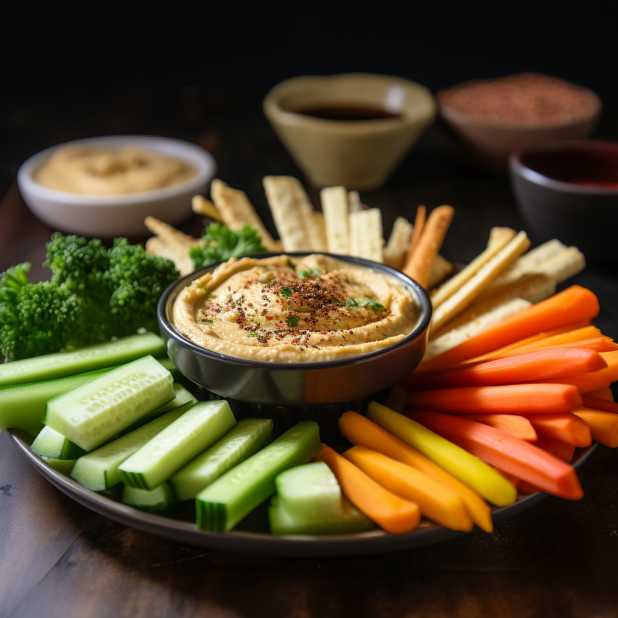
Hummus and Vegetable Sticks
Enjoy a crunchy and creamy combination by dipping an assortment of fresh vegetables like carrots, cucumbers, and bell peppers into a serving of hummus. This snack is rich in fiber, vitamins, and plant-based protein.
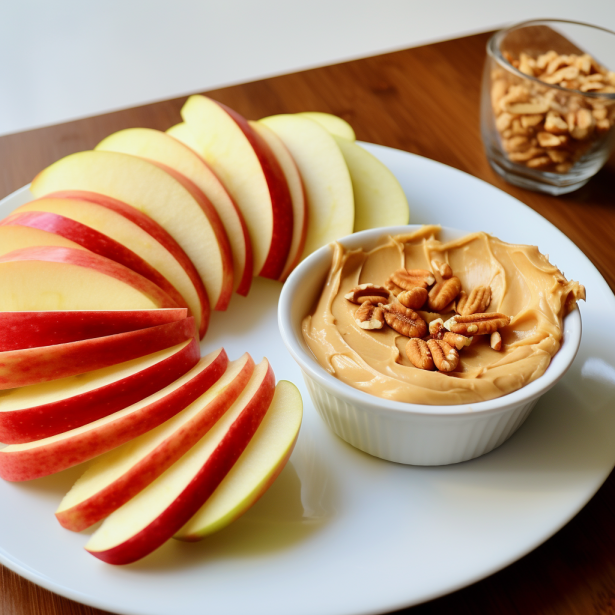
Fruit with Nut Butter
Sliced apples, bananas, or celery sticks paired with almond, peanut, or cashew butter create a sweet filling snack. The combination of fiber from the fruit and healthy fats from the nut butter offers both flavor and satiety.
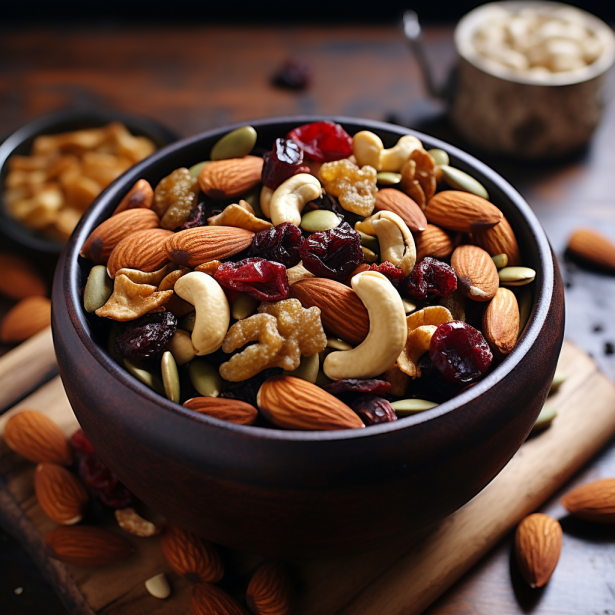
Trail Mix
Create your custom trail mix by blending nuts, seeds, dried fruits, and a touch of dark chocolate. Nuts and seeds provide protein and healthy fats, while dried fruits offer natural sweetness and fiber.
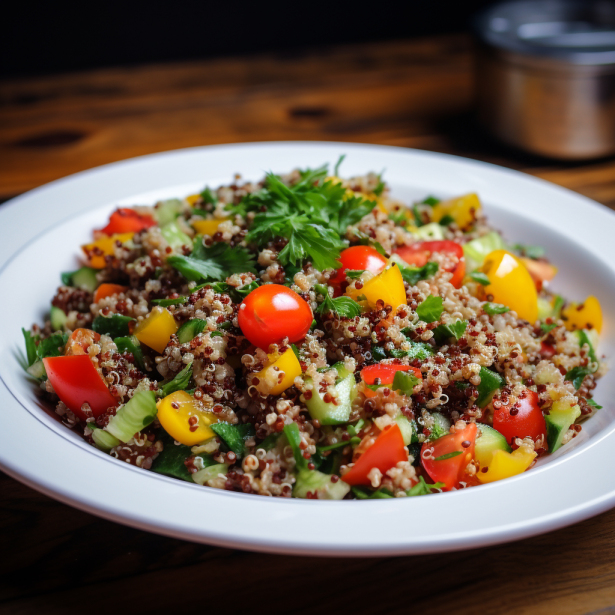
Quinoa Salad
A small portion of quinoa salad made with colorful vegetables, herbs, and a zesty dressing can serve as a refreshing and filling snack. Quinoa is a complete protein source, ensuring you stay full longer.
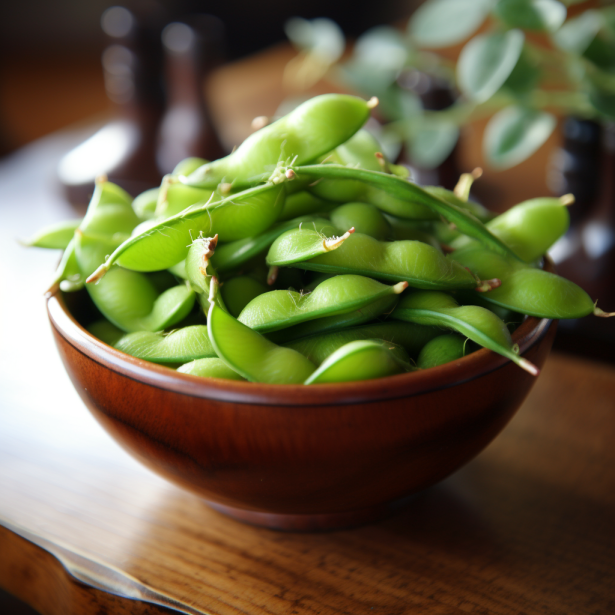
Edamame
Steamed edamame (young soybeans) sprinkled with a touch of sea salt is a protein-packed and portable snack. It’s ideal for on-the-go munching.
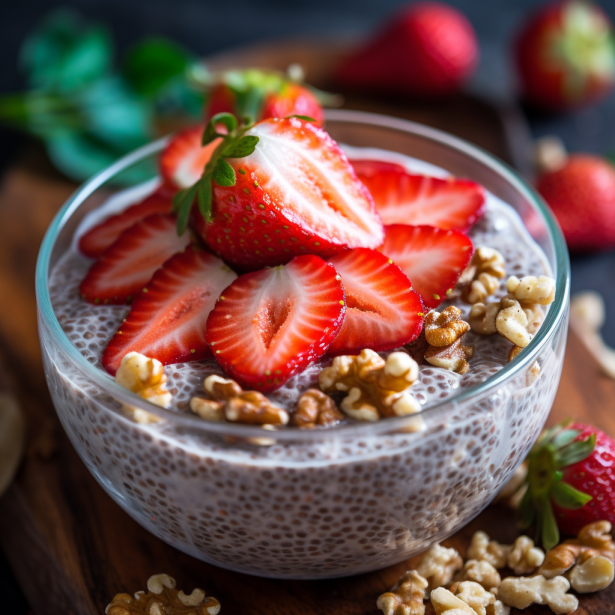
Chia Pudding
A small serving of chia pudding made with almond milk, chia seeds, and a drizzle of maple syrup can be a delightful, fiber-rich, and satisfying dessert-like snack. You can also top it with your favorite fruits for added natural sweetness and fiber. Nuts and seeds are also great additions. Aside from protein and fat content, it can also provide extra crunch to the chia pudding.
Portion Control
Pay attention to portion sizes. Any food, even those that are labeled as “healthy” can still lead to weight gain if consumed in excessive quantities.
Controlling portion sizes reduces the risk of overeating, which can lead to weight gain. Studies have shown that consuming pre-portioned foods for one or more meals a day can result in greater weight loss than a self-selected diet of regular foods.
Ways to implement portion control in your meals
- Use Visual Cues: Learn to estimate portion sizes visually. For example, a serving of meat should be about the size of your palm, and a serving of rice or pasta should be approximately the size of your clenched fist.
- Read Food Labels: Pay attention to serving sizes on food labels to understand how many portions are in a package and how many calories you’ll consume.
- Plate Size Matters: Opt for smaller plates and bowls to help control portion sizes. A smaller plate makes a typical portion look more substantial.
- Mindful Eating: Eat slowly and savor each bite. Being present during meals helps you recognize when you’re full and prevents overeating.
- Pre-portion Snacks: Divide snacks into individual portions ahead of time to avoid mindless munching straight from the package.
- Use Measuring Tools: When starting, measuring cups and kitchen scales can be valuable tools for precise portion control.
Variety is Key
One of the fundamental principles for successful vegan weight loss is the importance of variety in your diet. While it’s easy to assume that a vegan diet consists primarily of salads and vegetables, the reality is that a well-balanced vegan diet can include a wide array of foods, flavors, and textures.
Embracing this diversity not only makes the journey enjoyable but also enhances your chances of achieving and maintaining your weight loss goals. One way to ensure you have a variety of meals is to plan them ahead. This way, you can ensure you have diverse, nutritious, and balanced options. Learning how to make meal plans will help you in achieving this goal.
A diverse diet would most likely give you enough nutrients you need while keeping your meals exciting, reducing the likelihood of cravings or boredom. Experiment with different combinations of proteins, grains, fruits, and vegetables.
Tips to help you add variety to your vegan meals while trying to lose weight
- Do your research: Due to the popularity of vegan diets nowadays, the availability of resources on vegan recipes can be found anywhere on the internet. Try to explore different websites that share vegan recipes. There are also vegan meals tutorials available on social media platforms like YouTube and Instagram that can give you step by step tutorials on how to prepare vegan meals.
- Explore different cuisines: Discover vegan dishes from various cultures around the world. Indian, Mexican, Thai, and Mediterranean cuisines, for example, offer a wide range of plant-based options.
- Experiment with new ingredients: Don’t be afraid to try ingredients you’ve never used before, such as jackfruit, nutritional yeast, or different types of whole grains like quinoa, farro, and bulgur.
- Rotate your fruits and vegetables: Choose a colorful array of fruits and vegetables, varying them weekly or seasonally to ensure you benefit from diverse vitamins, minerals, and antioxidants.
- Create themed meals: Plan and incorporate themed meals on selected days, like “Taco Tuesdays” or “Stir-Fry Fridays,” where you explore different recipes within those themes.
- Use spices and herbs: Season your dishes with a variety of spices and herbs to add depth and complexity to your meals.
- Plan your weekly menu: Planning your meals for the week ahead allows you to ensure variety and balance in your diet. It can also help reduce the likelihood to resort to convenience foods and focus more on homemade whole foods.
Eating Enough Protein
Weight loss induced by diet may affect muscle mass negatively. Thus, it is important to eat adequate protein along with endurance and resistance type exercise to help preserve muscle mass. In addition, protein can help you feel full longer thus avoiding overeating and excessive snacking.
The Recommended Dietary Allowance (RDA) for protein for a healthy individual is 0.8 grams of protein per kilogram of body weight, or 0.36 grams per pound.
For example, a person weighing 64 kilograms.
65 kg x 0.8 g/kg BW = 52 grams
The person needs about 53 grams of protein per day.
Note: The RDA represents the minimum amount of a nutrient required to maintain basic nutritional health and prevent illness, rather than the exact daily quantity you should consume. It is best to consult a professional to know your individualized needs.
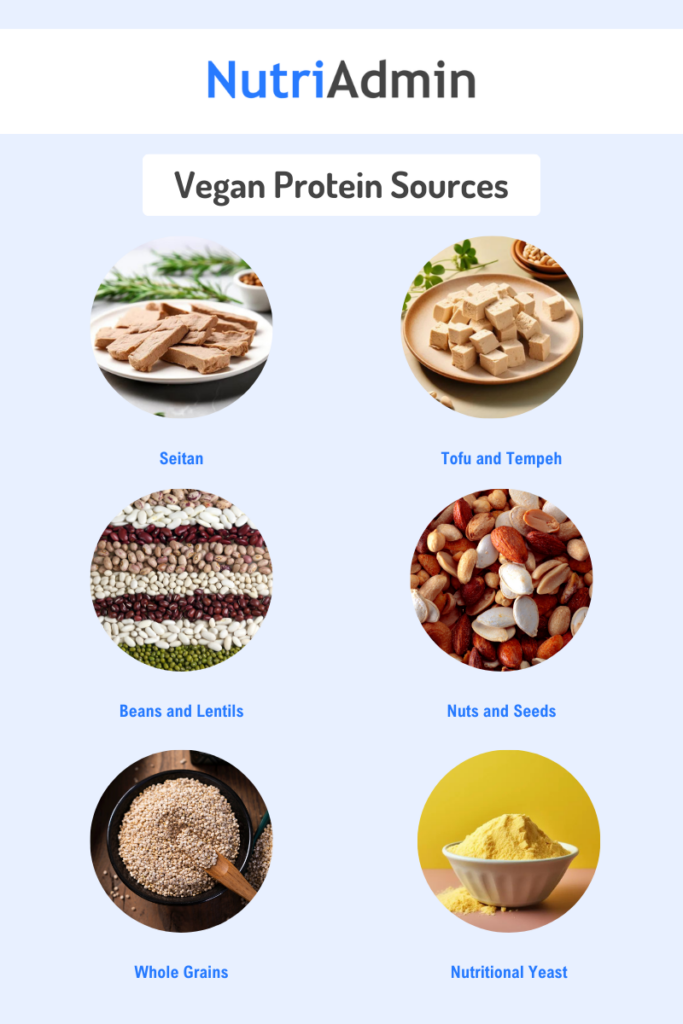
Avoiding Micronutrient Deficiencies
The vegan diet eliminates all animal-sourced foods. Without careful planning, individuals following a vegan diet may be at risk of deficiencies in vitamin B12, vitamin D, iron, zinc, and calcium. These micronutrients are primarily present in animal foods or have lower bioavailability in plant foods.
In order to prevent micronutrient deficiency while trying to lose weight on a vegan diet, consume plant sources that are rich in these vitamins and minerals. Also, choose fortified foods or take supplements that contain said micronutrients.
Here are some examples where you can get Vitamin D, Calcium, Iron, and Vitamin B12 while on a vegan diet:
| VITAMINS/MINERALS | FOOD ITEMS |
|---|---|
| Vitamin D | • Sunlight exposure • Vitamin D fortified foods – spreads, breakfast cereals, juices, and soy drinks • Raw mushrooms |
| Iron | • Legumes – lima beans, black-eyed peas, navy beans, chickpeas • Soy products – tofu and tempeh • Whole grains – oats, quinoa, spelt • Pumpkin seeds • Chia seeds • Unpeeled potato • Black olives • Dark chocolate • Nuts – macadamia nuts, almonds, pine nuts, cashews • Whole meal bread and flour • Iron fortified breakfast cereals • Vegetables – green leafy, broccoli, oyster mushrooms, Brussel sprouts, spinach, beet greens • Dried fruits – apricots, prunes and figs |
| Calcium | • Leafy greens – cabbage, kale, mustard greens, collard greens • Fortified breads, unsweetened soya, pea and oat drinks • Calcium-set tofu • Sesame seeds and tahini • Chia seeds • Edamame and white beans • Amaranth and quinoa • Dried fruits – raisins, prunes, figs and apricots |
| Vitamin B12 | • Breakfast cereals and soy drinks fortified with Vitamin B12 • Nutritional yeast • Algae products – seaweed, spirulina and chlorella (amounts may vary, not considered reliable source) |
Stay Hydrated
Sometimes, our bodies confuse thirst with hunger. Drink plenty of water throughout the day to help control your appetite and stay well-hydrated.
Limit intake of sweet drinks that may contain higher simple sugars and calories like drinks with cream, energy drinks, sweetened juices, etc. Choose to drink water, black coffee, or plain tea instead.
Vegan Diet and Eating Out
In recent years, the vegan diet has gained popularity. Many vegan restaurants have opened, and other restaurants have added vegan-friendly options to their menus. This makes eating out as a vegan much easier. Although some places may not have lots of vegan options, you can still have a great time eating out by following these simple tips:
- Plan Ahead: Before heading out to eat, it’s a great idea to do some planning ahead. You can hop online and look up different restaurants in your area to see if they have vegan-friendly options. This way, you’ll have a clear idea of where you can go to enjoy a delicious vegan meal, and it takes the guesswork out of the equation.
- Ask for Guidance: Once at the restaurant, don’t hesitate to ask your server for guidance on vegan selections or suitable menu modifications.
- Beware of Hidden Ingredients: It is important to be cautious of hidden ingredients in your food. Some animal products, like cheese and mayonnaise, can hide in dishes that seem vegan. Also, watch out for non-vegan sauces, like fish sauce, as they may be included in your meal without your knowledge.
- Specify Your Dietary Needs: Clearly and politely communicate your dietary requirements, ensuring that the staff is aware of your need to exclude all animal products, including dairy, eggs, and animal-derived ingredients.
- Explore Different Vegan-Friendly Cuisines: Consider visiting restaurants that serve different types of food from around the world. You can try cuisines like Thai, where you’ll find flavorful curries and stir-fried vegetables, or Indian, which offers dishes like lentil stews and spicy chickpea curries. Mediterranean cuisine features items such as falafel, hummus, and fresh salads, while Mexican restaurants serve up tasty bean burritos and veggie fajitas.
Consult a Professional
It’s important to remember that every individual is unique, and the example provided here is for illustration purposes only. When it comes to practicing a vegan diet with the goal to lose weight, or any effort in making significant dietary or lifestyle changes, seeking professional advice is best to meet your specific needs and goals.
Muscle Gain and Vegan Diet
Recent research has shown that gaining muscle on a vegan diet is entirely possible. A carefully structured high-protein vegan diet can be equally effective as an omnivorous one, especially for those who are regularly doing resistance exercise training.
Protein Intake
Protein intake is a critical factor in muscle development. Both vegan and non-vegan diets can provide sufficient protein to support muscle growth when protein intake exceeds certain thresholds (around 1.6 g/kg body weight).
Resistance Training
Resistance exercise training is essential for muscle development. Combining a well-structured workout routine with a high-protein vegan diet can lead to significant gains in muscle mass and strength.
Mycoprotein as Protein Source
Mycoprotein, a fungal-derived protein source, has been shown to be effective in supporting muscle growth on a vegan diet. In a study, young adult participants in resistance training, consuming a high-protein vegan diet with mycoprotein experienced similar muscle protein synthesis rates compared to those on an omnivorous diet.
Benefits of Vegan Diet Beyond Weight Loss
In addition to supporting weight loss, a vegan diet offers numerous health benefits. Vegan diets are associated with reduced risks of chronic conditions, including heart disease, and diabetes, due to their emphasis on plant-based foods rich in fiber and antioxidants.
Notably, a vegan diet can promote cardiovascular health by reducing hypertension and diabetes severity, leading to better cardiac outcomes. Lower levels of saturated fats and LDL cholesterol in vegan diets contribute to improved longevity.
Additionally, vegan diets foster a healthy gut microbiome, reducing inflammation and enhancing nutrient absorption. Furthermore, it contributes to environmental sustainability by reducing greenhouse gas emissions and conserving resources, making it a compassionate and eco-conscious choice.
Automatic Vegan Meal Planning Software
Planning meals in general can be difficult and very time consuming. You may often ask yourself questions like “what should I eat?”, “am I eating too much or too little?”, or “am I doing this right?”.
NutriAdmin created a meal plan builder that can help make individualized meal plans based on a person’s caloric and macronutrients needs, as well as their unique restrictions in just 60 seconds. You just have to enter several details as shown below:
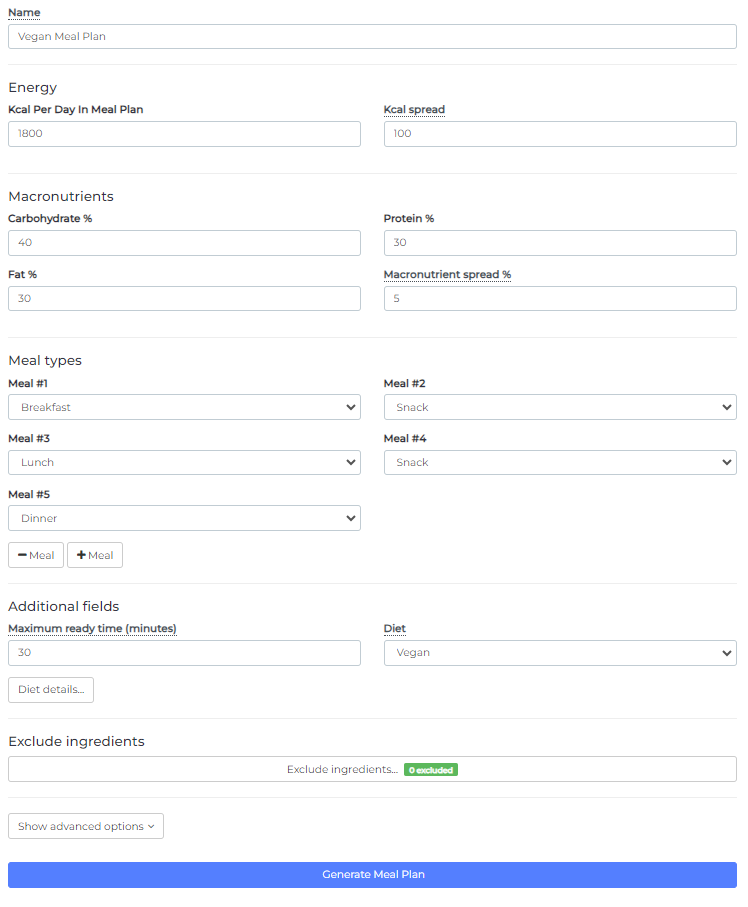
Here is a sample meal plan result based on the details entered on the previous screenshot:
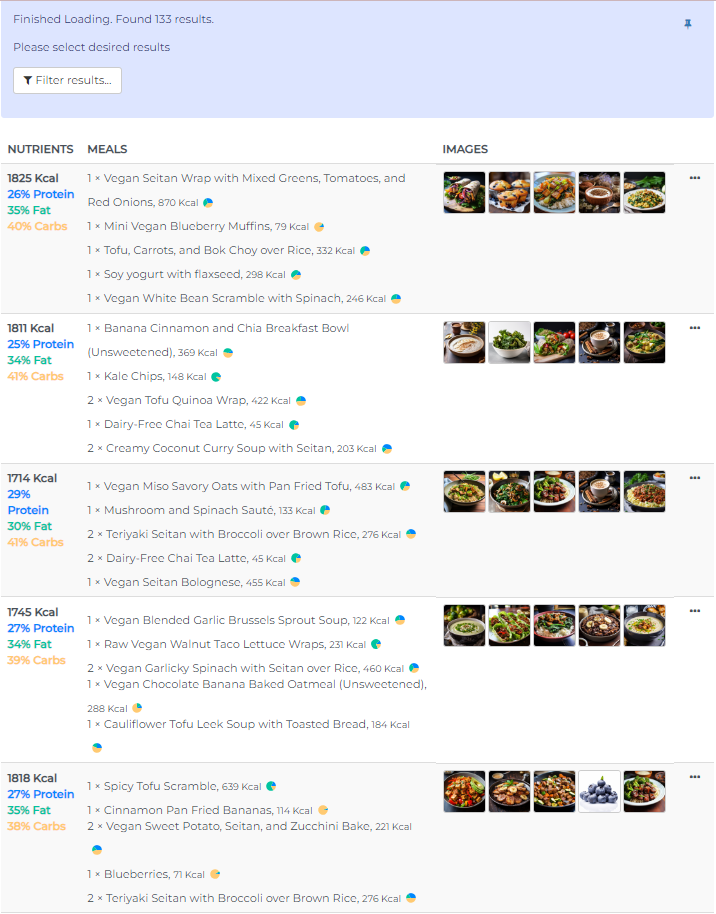
Sample 7-Day Vegan Meal Plan for Weight Loss
When using NutriAdmin’s meal planning software to create a personalized meal plan, not only will you receive a custom meal plan, but you will also have access to a dietitian reviewed recipes for each dish, along with detailed information on their macro and micronutrient content. Furthermore, to simplify your meal planning, a comprehensive shopping list is also provided.
Aside from the meal plan generator, NutriAdmin also added a recipes database that allows you to generate delicious and practical vegan recipes. You can also use NutriAdmin for health and nutrition coaching or as software a personal trainer.
Simply input your desired dish, and the software will promptly locate a recipe that perfectly suits your requirements. This not only streamlines the recipe creation process but also eliminates the need for time-consuming nutrient calculations. With this remarkable feature, you can transform the hours spent creating recipes into just a matter of seconds, making your meal planning and preparation a breeze.
Do you want to try this time-saving tool? Sign up for a 14-day free trial now!
Conclusion
Vegan diet can be a sustainable way to lose weight when done right. Due to the restrictive nature of this diet that excludes animal products, there can be downsides to this diet like micronutrient deficiencies. Thus, eating a variety of foods including those that are fortified with Vitamin B12, Calcium, Iron and Vitamin D are important to avoid these problems.
Despite being commonly perceived as healthy, vegan foods can still make you gain unwanted weight. It would be best to choose whole or minimally processed foods, and limit highly processed foods if your goal is to lose weight on a vegan diet. On the other hand, a vegan diet can contribute to muscle gain and enhance performance in fitness training and sports, even without consuming animal proteins.
A vegan diet offers not just weight loss benefits but also significant health advantages. It can reduce the risk of chronic health issues, like high blood pressure and diabetes. This, in turn, may contribute to a longer and healthier life. Beyond its health benefits, a vegan diet has a positive impact on the environment.
